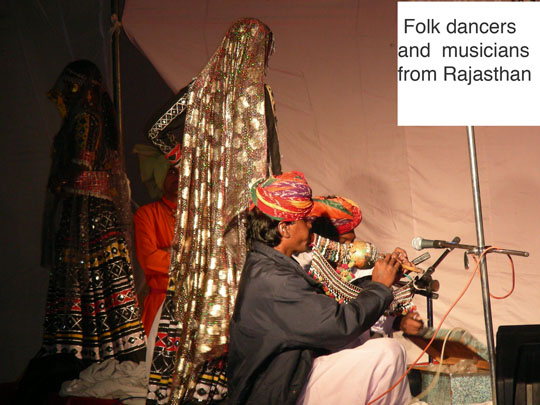
On Sunday we took the train (the Shatabdi Express) from Delhi, 3.5 hours north to Chandigarh. There is a Shatabdi express train that connects each of the state capitals to Delhi. Very smooth trip, completely full train. We were fed about every hour. We came to attend a conference of all of this year’s Fulbrighters in South Asia (India, Sri Lanka, Bhutan, Nepal and Bangladesh) plus alumni from those countries who have spent time in the U.S. Altogether 65 participants and a very interesting group.
Chandigarh is a new city. By new, I mean only fifty years old. We are very close to the Pakistan/India boundary established in 1947. This area is called the Punjab and was part of a very, very old civilization, as old as Egypt or China, and probably as old as the area where many Americans are forced to visit today, Mesopotamia. When India was granted independence, the Indian Congress Party was unable to keep the country constituted as large as pre-independence. The Muslim faction insisted on partition, and the British colony of India became Pakistan and India. In 1972 Pakistan had a civil war and the eastern part became the country of Bangladesh (difficult to keep two parts together when separated by more than a thousand miles of hostile Indian territory). The more western part is the modern country of Pakistan.
The capital of the pre-independence Punjab area was Lahore, a fabulous city now in the country of Pakistan. Prime Minister Nehru commissioned two American architects named Mayer and Nowicki to design an entirely new capital for the state of Punjab. After two years of creative work, Mayer was forced to give up the project when Nowicki was killed in a plane crash. The second architectural team was lead by Le Corbusier, a French architect, definitely of the Modern school. His creation is an urban sector grid system. Each sector is a self-contained urban landscape with markets, housing, parks and commercial areas. Easy to give directions, just like a lot of 1950’s American subdivisions, so many blocks on the X-axis then so many blocks on the Y-axis, bingo.
The State of Punjab was further divided later into a smaller Punjab and a larger State of Haryana, and the city of Chandigarh is now the capital of both Punjab and Haryana. The city is a union territory like our District of Columbia. The area of October’s devastating earthquake is just far enough away to have spared Chandigarh of any significant damage.
If there is any way to find a silver lining in such a terrible disaster, it is the fact that the relief efforts made by India and allowed by Pakistan has opened the border slightly. Pakistan refused to allow relief supplies to be transported by Indian military transports, so India has allowed the U.S. military to transport Indian relief aid and equipment into Pakistan, which has been tremendously appreciated by Pakistan. Not that things are totally open and warm between India and Pakistan even now. The Pakistani Fulbright alumni members of our conference arrived a day late due to permit hassles and were not allowed to go anywhere other than Chandigarh. None of them had ever been in India before. In the center of one of the traffic roundabouts in Chandigarh are 3 Pakistani tanks captured by India in the 1965 war, and there is a huge army base just outside of town. Yet people hope there is a long-term trend toward more openness. After Partition many Muslims stayed in the Punjab and became citizens of the new country of India, as did Hindus, Christians, Jains, and Sikhs. Most people here in Chandigarh, Sikhs and Muslims, have relatives and friends in Pakistan, and in most cases have not been able to see them since 1947. Just while we have been here a Sikh holy man in a Golden Paliquin was carried from Delhi through all of the Sikh towns of Haryana and Punjab, and across into Pakistan to Lahore. First time that has happened since partition.


